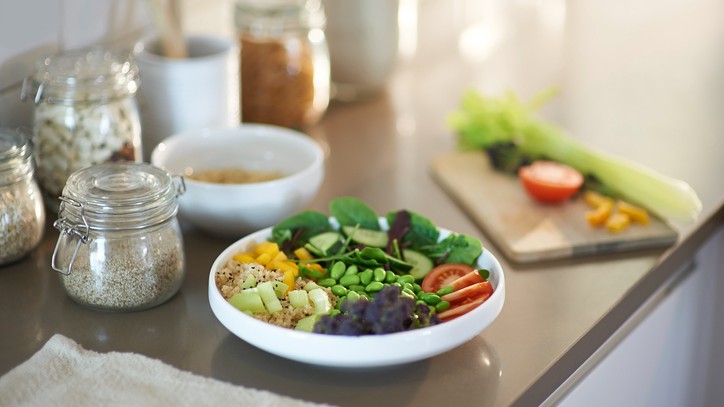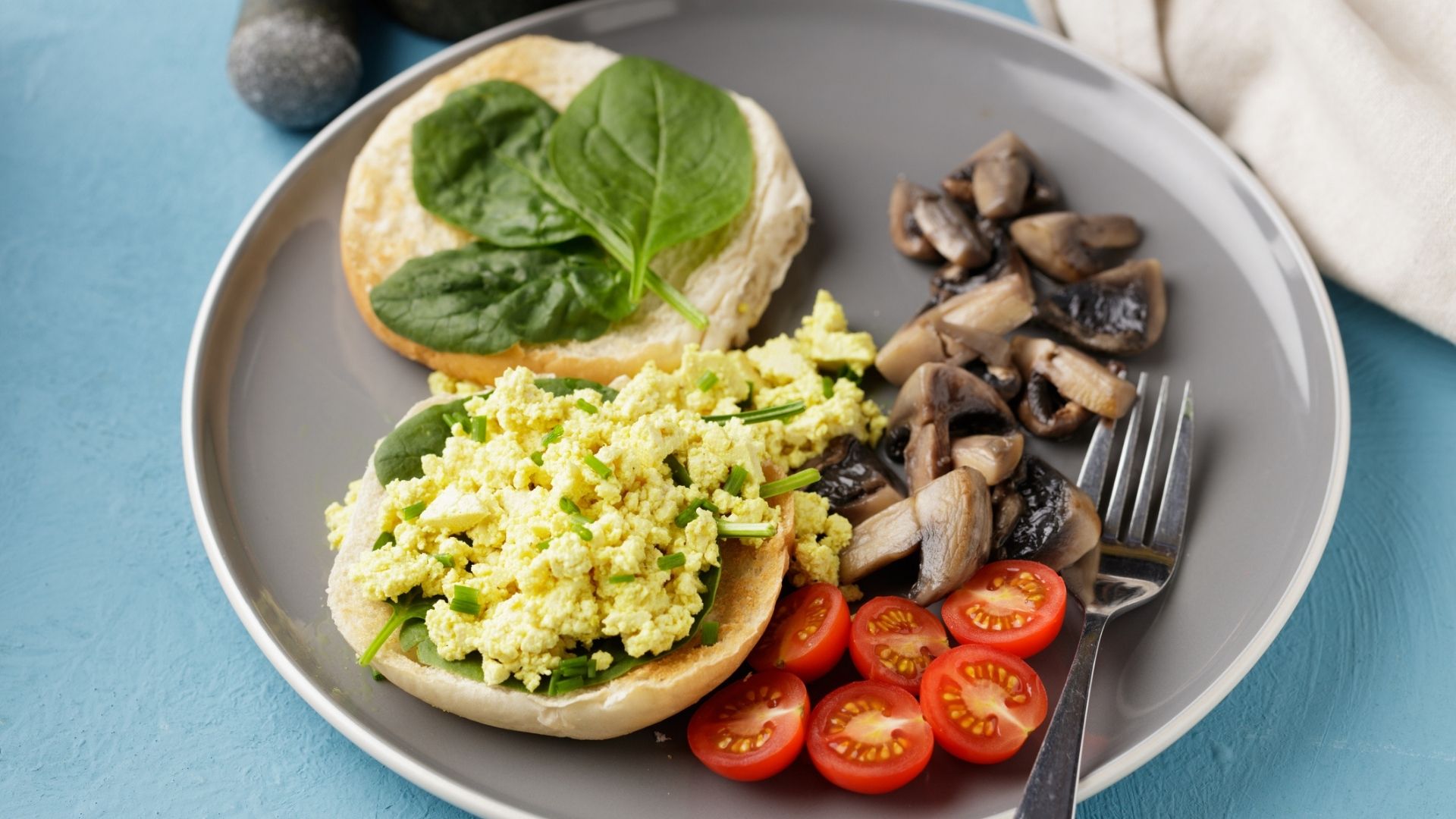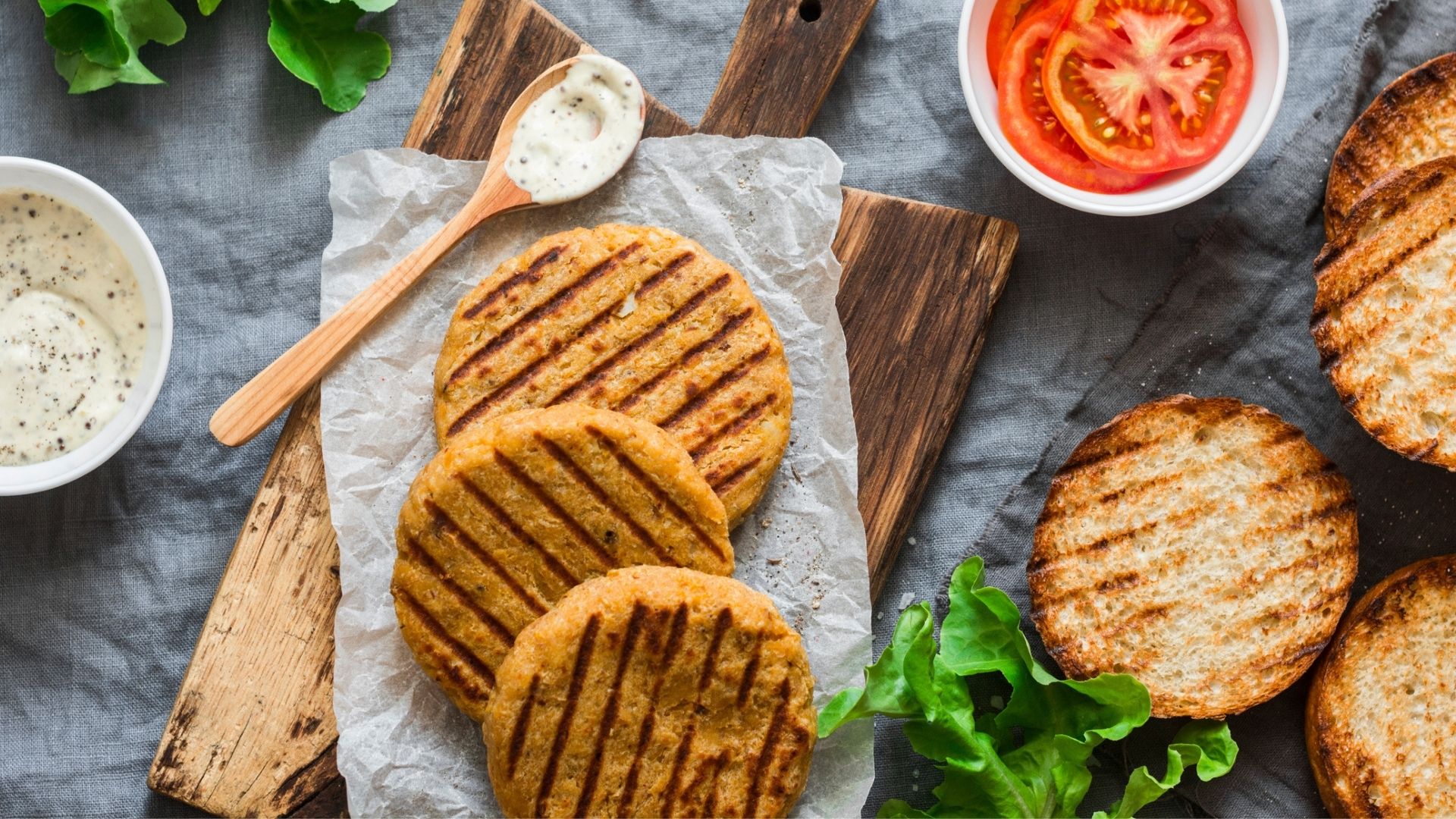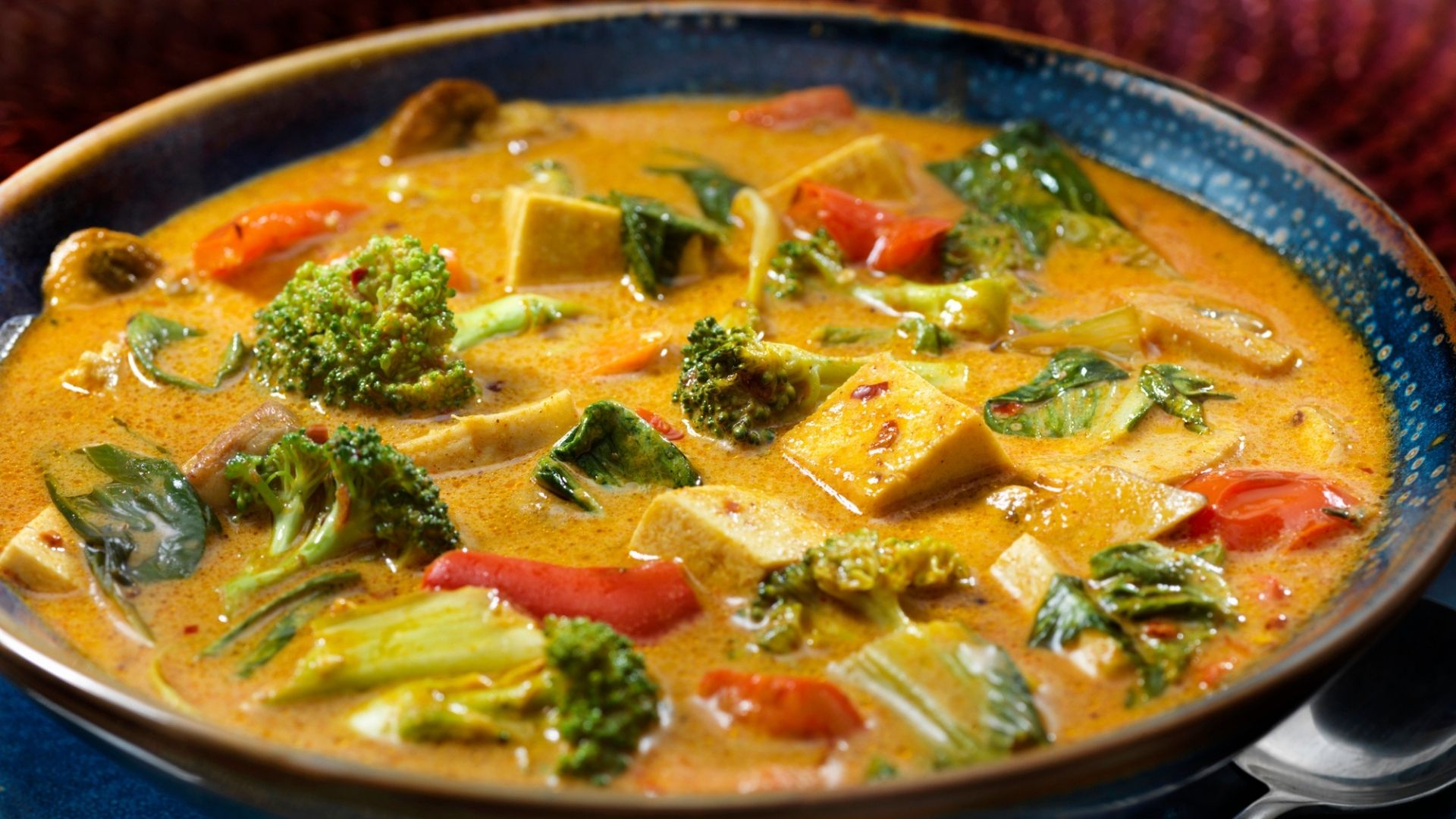7-day plant-based diet meal plan
Eat more plants without spending extra time in the kitchen with our expert-backed plant-based diet meal plan

With an increasing amount of people choosing to follow a plant-based diet meal plan, we asked the experts what plant-based actually means. Many of us know that consuming fewer animal products is good for the planet, but dialing down on the amount of meat and dairy we consume can also be good for our health.
Cutting out meat and dairy products can feel challenging – especially if you’re not that confident in the kitchen – but there are plenty of alternatives out there to help and you definitely don’t have to skip your favorite meals, you just need to tweak them. Plus, if you invest in one of the best vegan protein powders, you can rest assured you’ll still be getting the protein you need.
From savvy grocery shopping to identifying your plant-based protein sources, there are plenty of ways that you can increase your fruit and vegetable intake without it feeling like an enormous chore. Here, we break down the components of a plant-based diet, provide you with a seven-day plant-based diet meal plan and give you some tips to help you along the way.
What to eat on a plant-based diet
According to a study by the Journal of Translational Psychiatry, research shows that a plant-based diet can improve your overall health and help reduce the risk of disease. Many researchers believe this is partly down to the reduction of animal products in the diet.
“A plant-based diet is one that contains foods that have come from plant sources, with little to very few animal products,” says registered dietitian Reema Patel of Dietitian Fit & Co
To help you discover how easy and nutritious plant-based meals can be, Patel has put together a seven-day plant-based diet meal plan.
- Related: Are protein bars good for you?
- Related: Plant-based diet for beginners
Plant-based breakfast ideas
Day 1: Peanut butter and banana on whole grain toast – here you get protein and healthy fats from the peanut butter and the banana and wholegrain toast provide carbohydrates and a source of fiber.
Day 2: Chia pudding – chia seeds are an excellent source of healthy fats and plant-based protein. We can make this with plant-based milk alternatives (be sure to choose a fortified, no added sugar variety). Any additional fruits added will provide a source of fiber.
Day 3: Tofu scramble & wholegrain toast with mushrooms – tofu is an excellent protein source, combining it with carbohydrates and fiber from the toast and mushrooms, to get in plenty of nutrients to start the day.
Day 4: Mango smoothie with oats, coconut milk, and coconut yogurt – make this fruit smoothie more filling by adding a tbsp full of oats.
Day 5: Almond butter and strawberries on whole grain toast – here you get healthy fats from the almond butter and the strawberries provide fiber and an antioxidant boost.
Day 6: Greek yogurt with oats, berries, and chia seeds – yogurt is a great source of protein as are the chia seeds.
Day 7: Quinoa porridge with peach slices and an almond butter drizzle – like chia seeds, quinoa is another significant source of protein, making it perfect for a plant-based diet meal plan.

Plant-based lunch ideas
Day 1: Plant-based cheese and cannellini bean spinach salad – the cheese provides both protein and fats, with the beans supplying additional protein and some high-fiber carbohydrates. The spinach adds a further fiber boost and a range of vitamins and minerals.
Day 2: Smashed chickpea, rocket, and cucumber sandwich – smashing chickpeas with some Greek yogurt or vegan yogurt alternative provides some protein, carbohydrates, and fiber. Adding in some whole grain bread for a boost of fiber and the salad for the micronutrients rounds this quick lunch idea off nicely.
Day 3: Plant-based tuna, avocado, and cherry tomato rye crispbreads – a 10-minute lunch idea; mix tuna and ripe avocado to provide protein and healthy fats from the avocado. Load these onto wholegrain or rye crackers for the high fiber carbohydrate source and top with some cherry tomatoes. Serve with a side salad if you like for an additional source of fiber and nutrients.
Day 4: Roasted vegetable salad with rocket, spicy chickpeas, and hummus – use rocket as the base, and then load on your roasted vegetables, and chickpeas. Drizzle over some hummus for some healthy fats.
Day 5: Smashed chickpea, tomato, and rocket pitta bread – same as your day two meal, except serve it with pita bread, some crushed walnuts, and a squeeze of lemon or a dollop of hummus.
Day 6: Plant-based mice ragu and jacket potato – make a typical ragu using a plant-based mince substitute as the protein source, adding in a variety of vegetables such as peas, sweetcorn, and carrots.
Day 7: Chickpea patties – mix smashed chickpeas, breadcrumbs, and nutritional yeast and combine with shredded carrot and olive oil. Fry in a pan and serve with a light salad or inside a pitta bread.

Plant-based dinner ideas
Day 1: Wholegrain with plant-based ‘mince’ ragu – pair this with wholegrain pasta to provide a high fiber carbohydrate source, and top with cheese or vegan cheese alternative.
Day 2: Vegetable fried rice and tofu – tofu is an excellent high protein vegan food that goes great in stir-fries and fried rice. You can add in frozen veggies (which are just as nutritious as they are fresh) to make this a quick weekday meal. Use brown rice for an extra boost of fiber.
Day 3: Black bean burger patties with sweet potato fries & salad – plant-based burgers are a good source of protein and fiber, and they also freeze really well. Serve this with some homemade sweet potato fries for a boost of fiber and nutrients.
Day 4: Jacket potato with spicy chickpea beans – using a spicy tomato sauce as the base for your chickpeas, you’ll get your required protein, while the potato provides your carbohydrates.
Day 5: Lentil lasagne – much like with the bolognese, you can use lentils to replace mince and layer your lasagne with whole grain lasagna sheets and a white sauce that uses plant-based butter and vegan cheese.
Day 6: Tofu, sweet potato, and spinach curry – here, your tofu is your primary protein source. Serve this curry with brown rice so you’re consuming added complex carbohydrates.
Day 7: Vegetable kebabs – using vegetables such as courgettes, aubergine, and tomatoes, serve these kebabs with whole grain pita bread, sweet potato fries, and a side of crispy chickpeas.

Tips for following the plant-based diet meal plan
Many people assume that following a plant-based diet means a lot of time spent in the kitchen, but there are ways you can make your eating habits simpler, as Patel explains:
- Identify your protein sources: Some good plant-based protein sources include soy and soy products (such as tofu, edamame beans, and tempeh) and legumes (such as kidney beans, chickpeas, and red lentils). In addition, nuts and seeds such as chia seed, hemp seeds, and walnuts provide a source of protein, and some grains like quinoa and teff can provide a source of protein. Not forgetting the vegan meat substitutes and seitan, which is made from wheat protein.
- Be prepared: Following a plant-based meal plan can be difficult if you don’t have the right ingredients, so make sure that you plan out your meals in advance and stock your cupboards with protein essentials such as the ones listed above.
- Have fun with fiber: Upping our intake of fruits, vegetables, pulses, beans, nuts and seeds can play an important role in health through many processes, such as reducing cholesterol and colon cancer risk, controlling blood sugar, and also promoting the production of healthy gut bacteria. Make the most of your unlimited vegetable intake, by trying out one new vegetable each week. It will give you a chance to try something new and liven up your meals.
Sign up for the Live Science daily newsletter now
Get the world’s most fascinating discoveries delivered straight to your inbox.
Stacey Carter is a Freelance Health Writer who has written print features and digital content for titles such as Woman & Home, Natural Health, Women’s Health, Get The Gloss, and Stylist. You'll find her covering a wide variety of health-based topics, talking to leading figures in the fitness industry, and investigating the latest trends in wellness. When she’s not at her laptop, weekend hikes, testing out new recipes in the kitchen and LISS-style workouts are her favourite ways to switch off.











